Just reading the title of this article will make some folks squirm.
After all, the thought of eating insects is not an easy one to swallow. However, once you manage to control your impulses and understand that edible insects can save your life, you can add another source of survival food to your list of “edible stuff.”
There’s a lot of research online about the nutritional value of edible insects, and there are quite a few Asian countries in which restaurants will tempt you with a plate full of fried crickets if you pay them a visit.
Since for most people out there eating a plate of edible insects is more like a “dare” situation or an unusual experience to try, in certain cases the small crawlers that disgust you can actually save your life.
The survival story of Reginald Foggerdy
Back in 2015, I took a great deal of interest in the survival story of a 62-year-old Australian man. Besides being an incredible survival story, it also teaches us about human determination and the things we are willing to do, to see our loved ones once more.
The story of Reginald Foggerdy, a hunter and experienced camel tracker started when he spotted a wandering camel in the Great Victoria Desert in Western Australia. He decided to abandon the car driven by his brother in order to pursue a camel in the hope that he would make a few bucks.
He never expected to get lost since he has experience in tracking camels and yet, he embarked on his real-life wilderness survival trial. Despite all the odds against him, he managed to stay alive for six days without any gear. According to the police officer who found him, he went hunting wearing only a t-shirt, shorts and sandals.
Once he realized, there’s no way he can get back to the road, he decided to stay put, hoping for the rescue teams to find him. His last couple of days of survival were achieved by lying down under a tree and eating ants.
Although it is hard to speculate how much longer he could have survived, the rescue team said that he was barely holding on and he “was extremely dehydrated, disoriented and basically delusional.”
Some people speculate that it’s nothing but a miracle that he managed to survive so long without water, while others say that eating ants is the only thing that kept him alive. Many people say that they would die rather than eating insects, but in certain cases, this may be your only survival option. I assume that Mister Foggerdy wasn’t thrilled either by this idea. However, he knew that eating ants can save his life, and he went for it.
Edible insects are the food of the future
As a nation, we are used to eating more than three meals a day for the majority of our lives. And this goes without mentioning snacks or other “comfort foods.” For the average American, going a few hours without food is something that can be handled very well. Going a few days without food is unacceptable in our culture. The food industry makes sure our eating habits are not altered and the number of people asking themselves what would happen if this industry will one day collapse, is unnoticeable. After all, not everyone is a “crazy, paranoid prepper” like you and me.
However, even with all the abundance we have, the people in charge have realized that it’s harder and harder to keep us fed and they are looking into ways to improve the farming sector, while vertical gardens are becoming more and more popular, the need for proteins cannot be covered by vegetables alone.
Some scientists are developing lab meat, while others have turned their attention to the insect world. There are many studies being conducted in order to establish how our world could deal with food shortages by farming and consuming edible insects.
Edible insects in North America
In North America, like in many places of the world, there are plenty of edible insects that could provide the nutritional needs for a human to survive another day.
If you happen to get stranded in the wilderness like Mister Foggerdy did, you should know what type of edible insects can be found in your area and how to cook and eat those insects.
It will not be the end of the world if you have to count on edible insects to supplement your diet. You will adapt easily if you have no other choice and you will be thankful you have something to eat when your stomach growls.
My top 5 edible insects of choice
 1. Honeypot ants
1. Honeypot ants
In the western parts of the U.S, as well as in Arizona, New Mexico, you can find several species of honeypot ants. These ants are quite common in arid and semi-arid regions. These are edible insects with good nutritional value, and the ones you should gather are the specialized worker ants (repletes).
The worker ants can be recognized easily due to their abdomen being bigger than the ones of normal ants. They are filled with food destined for the colony to help it survive when food is scarce. If you get lost in the desert, you can eat honeypot ants, and you will survive to tell your story.
Honeypot ants can be identified by their color, especially green and blue. They can also be dark red in color and measure ¼ inch to ½ inch in length, but the most distinctive characteristic of these edible insects is their abdominal swellings.
How to eat honeypot insects:
You will need to dig up the ants, but once you do this, you can eat them raw, without any additional effort. They have a sweet taste since they are made up mostly of natural sugars and water. These ants are a refreshing treat that will keep you alive in the wild.
 2. Short-horned grasshoppers
2. Short-horned grasshoppers
When it comes to eating grasshoppers, I must admit they don’t look too appealing to me. Grasshoppers can be found throughout North America in areas such as meadows, fields, hedgerows, and forests, but they are quite hard to catch, and you will need to spend a few hours before you manage to catch a good quantity. Short-horned grasshoppers range in size from 0.2 to 4 inches in length, and many species are green or light brown in color.
You are better off if you manage to improvise a trap or two, just to make sure you have enough for a proper meal. You will need to use a glass jar to catch these edible insects easily.
Dig a hole in the ground, place the jar in it and add some bait (such as fruits). Adding a little bit of water can also help as it will drown the insects that find their way inside.
How to eat short-horned grasshoppers:
Eating grasshoppers is a common habit in Asian countries because these insects provide protein and calcium. I recommended you cook these edible insects to make them safe to eat. You have the choice to boil, fry, or roast them and add the seasonings of your liking.
Another thing you should know is that the legs and wings have to be removed before eating the grasshoppers as these parts are difficult to swallow.
 3. June Bugs
3. June Bugs
The June bug is a genus of beetle, and they are common species of edible insects that can be found across the planet. In North America, in the southeastern U.S., you can find the green June bug. In the western and southwestern U.S., you can find the fig eater June bug. The bugs are less than one inch in length, and their taste can be described as buttery or resembling walnuts.
Jun bugs have different colors, such as orange, yellow, red, green, brown, and blackish. June bugs can be found near lights, and the best way to catch them is to shine a flashlight onto a bed sheet at night.
How to eat June bugs:
In the old days, Native Americans used to eat June bugs by roasting them over the fire. You can use the same technique, or you can grill or fry them. You can eat both adults and larvae, and I recommend removing the legs and wings before doing so.
 4. Honeybee larvae
4. Honeybee larvae
The honeybee larvae are another good source of nutrients that you can count on when being stranded. Throughout North America, there are various species of honeybees that can be found. However, I must warn you that the Africanized bee is the most dangerous one and you should handle these insects with care.
When extracting larvae from Africanized bee, there’s a good chance to make them swarm. Not to mention that it can be rather difficult for inexperienced explorers to locate a beehive in the wild. However, once you manage to do so, your work will be rewarded.
The bee larvae you are searching for can be found in the honeycomb cells of the colony and, in general, are about the size of a fingernail. Since larvae are initially fed on royal jelly, these edible insects contain a decent amount of protein, sugars, fatty acids, B vitamins and traces of vitamin C.
How to eat honeybee larvae:
You can eat the larvae raw or cooked. They are sweet in taste and can provide a delicious treat that will not only keep you fed, but it will also help improve your morale. I know a few survivalists and bushcraft enthusiasts that prefer to fry honeybee larvae in butter. They say the taste is similar to bacon with a texture similar to mushrooms.
 5. Mealworms
5. Mealworms
These disgusting worms are the larvae of the mealworm beetle, a small blackish beetle that is found across the U.S. Mealworms can be easily located in the wild with a little practice. Your main target areas should be dark and cool places that provide moist microhabitats.
To increase your chances of finding these edibles insects, try turning rocks and wood during nighttime. Compared to other insects, mealworms can be easily collected, and they do not pose a threat when being disturbed.
How to eat mealworms:
Although they don’t look appealing, these worms are in fact, a good food source that can be baked or fried. A close friend of mine served me some after frying them on low heat for 10 minutes with some salt and other condiments. Some survivalists recommend adding them to salads to have a complete meal. From personal experience, I can tell you that these edible insects taste like almonds or nuts.
I’ve heard that some people also prefer to eat mealworms raw, but I recommend cooking them. As far as I know, they can cause an allergic reaction. If you know you are allergic to shellfish, you should avoid eating mealworms.
A last word
Although edible insects could provide a good nutritional intake, eating them should be a last resort. You should consume the insects listed in this article only if you don’t manage to find something else.
Besides the edible insects listed in this article, there are numerous other insects (Tibicen Cicada, Formosan Termites, Hornworms, etc.) that can be eaten as part of a survival diet. In the wilderness, if you have no other choice than eating insects, remember to check that what you are eating is non-toxic and make sure to cook it properly.


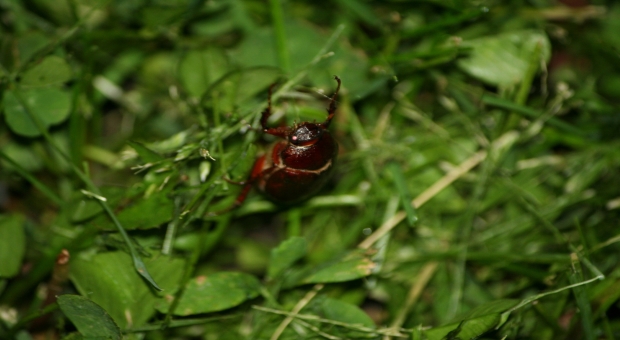


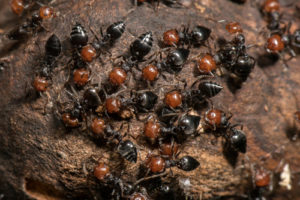
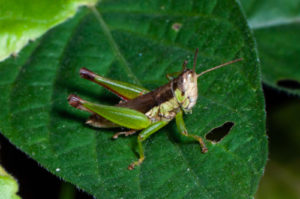
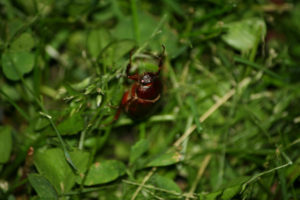
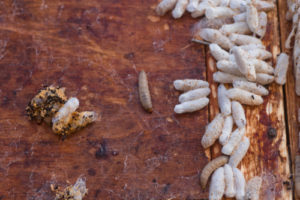
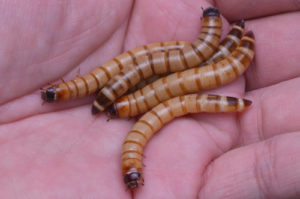




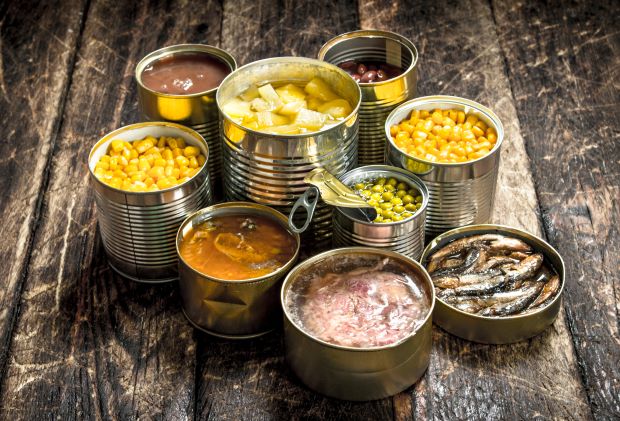


Danielle | September 19, 2019
|
This post was very informative. Knowing what is edible in your own backyard is a must know whether it be insects, animals or plants.
Kevin S | September 19, 2019
|
In many parts of our world, many insect types are common food staples, especially in Asia. The various peoples there aren’t so squeamish as here in the West.
Besides, in Asia, some insects are considered to be “comfort foods.”
JOLJ | September 26, 2019
|
If I had honeybees, the last thing I would eat is the baby bees.
There are so many plants & small aninals to grow & forge that insect are very low on the list.
I can go a month with out going to the store, if I had too.
Vicki Savage | January 5, 2020
|
One recommend book is Unmentionable Cuisine by Calvin W Schwabe. If you use that book as a start on Amazon, there are a plethora of other titles available. Even Torah sanctions insects with their hind legs above their bodies as clean food.